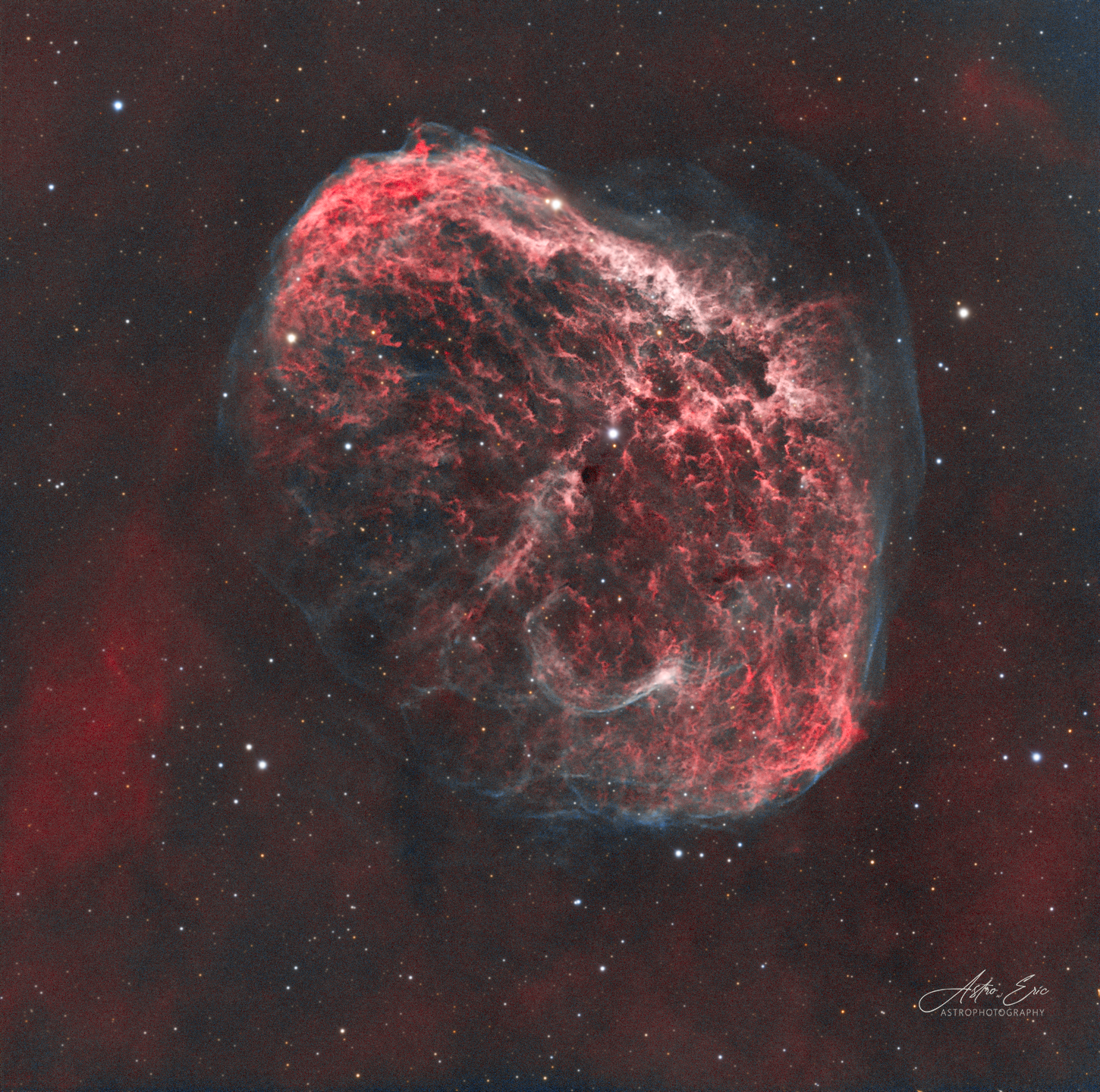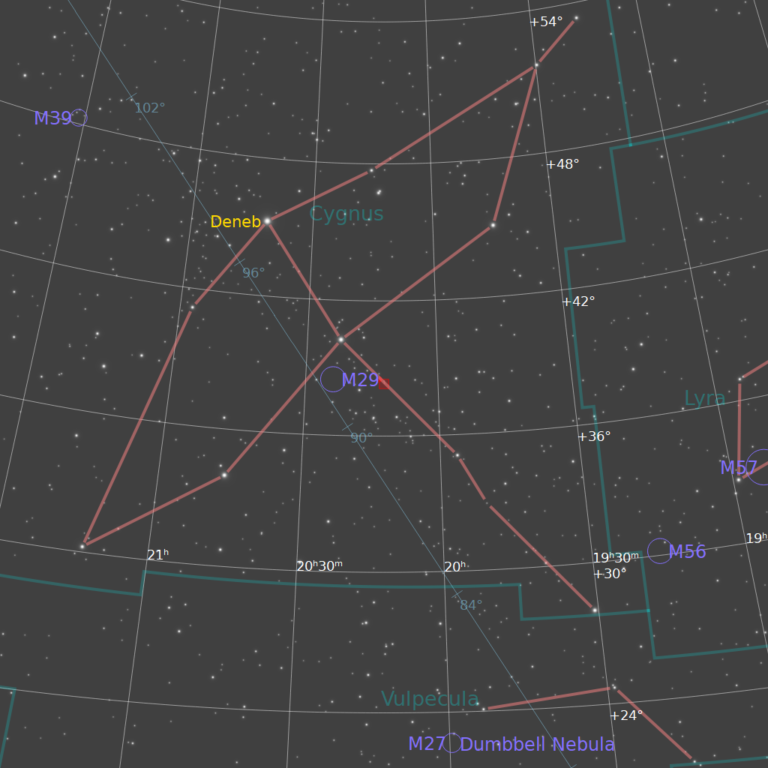
Type: Emission
Constellation: Cygnus
Distance from Earth: 5,000 Light-years
About: Discovered by William Herschel in 1792. It was formed by the fast stellar wind from Wolf-Raynet star WR-136 and has an apparent magnitude of 7.4. It is best to use an OIII filter to capture the outer shell and Hydrogen Alpha to gather the details of the two shock waves, one moving inward, the other outward.
Imaging Project Information:
Imaging Telescope: Celestron EdgeHD 8 Schmidt-Cassegrain
Imaging Camera: ZWO ASI533MM Pro
Mount: iOptron CEM60
Guiding: Celestron Off-Axis Guider and ASI147MM Mini
Filters and Frames: Antlia V-Pro RGB (to capture the stars) 60 x 30s each filter. Antlia Edge 4.5nm Hydrogen Alpha and Oxygen-3 (for the nebulosity) 52 x 300s per filter
Accessories: Primalucelab Essato 2″ LP Focuser and Giotto 255mm Flat Field Generator. Pegasus Astro Powerbox Advance (Power Management), USB3 Switch, and UranusMeteo Weather Station
Software: Acquisition – N.I.N.A. Preprocessing: Pixinsight Postprocessing: Pixinsight
Acquisition Period:
6/26, 6/30, 7/6, 7/18, 7/25, 7/27
